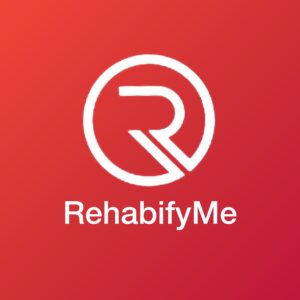
Prana, the Sanskrit term for life force, is often dismissed in modern medicine as a mystical or esoteric concept. Yet, in both ancient Ayurvedic texts and emerging scientific research, the role of breath, bioelectricity, and subtle energy fields in mental clarity and emotional equilibrium is becoming increasingly difficult to ignore. If the mind is the sky, prana is the wind—shaping thoughts, guiding emotions, and dictating the flow of consciousness. The question is not whether prana exists, but how deeply it influences our psychological state and whether modern science can begin to measure what Ayurveda has known for millennia.
In Ayurvedic philosophy, prana is one of the five vayus, or vital winds, governing all physiological and psychological functions. It is the force behind sensory perception, cognitive function, and emotional regulation. When prana flows freely, the mind remains sharp, and emotions remain fluid rather than stagnant. Blockages in prana, often caused by stress, trauma, or poor lifestyle habits, lead to foggy thinking, anxiety, and emotional instability (Frawley, 1999). Studies in psychophysiology suggest that controlled breathing techniques—central to prana regulation—directly impact the autonomic nervous system, shifting individuals from a stress-dominant sympathetic state to a calm parasympathetic state (Jerath et al., 2006).
Western neuroscience is beginning to corroborate what Ayurveda has long suggested. Research on diaphragmatic breathing, also known as coherent breathing, shows significant reductions in cortisol levels and improvements in executive function (Zaccaro et al., 2018). Pranayama, the yogic science of breath control, has been found to alter brainwave patterns, increasing alpha and theta waves associated with relaxation and deep focus (Brown & Gerbarg, 2005). In clinical settings, breathwork is now being incorporated into trauma therapy, particularly for individuals with PTSD, where dysregulated breathing patterns contribute to hyperarousal (Van der Kolk, 2014). Yet, Western medicine still hesitates to recognize prana as a fundamental force, preferring measurable biochemical explanations over subtle energy dynamics.
The division between East and West becomes clearer when examining approaches to mental clarity and emotional balance. Western medicine relies on pharmaceutical interventions such as SSRIs, stimulants, and anxiolytics to regulate neurotransmitter activity, often treating symptoms rather than root causes. While medications can be life-changing for many, they often come with side effects and do not address the energetic imbalances underlying mental distress (Moncrieff, 2009). In contrast, Ayurveda views prana as the crucial component, promoting practices such as pranayama, meditation, and the use of herbal adaptogens like Brahmi and Gotu Kola to rejuvenate mental function and restore emotional harmony (Pole, 2006).
The impact of prana—or its deficiency—extends beyond the self. In a society where burnout, attention disorders, and emotional dysregulation are rampant, the collective pranic depletion is evident. When an individual is mentally clouded or emotionally reactive, their relationships suffer. The nervous system does not exist in isolation; it communicates energetically with others. A dysregulated individual spreads their distress, while a person with balanced prana radiates calm and clarity, affecting those around them. Research in interpersonal neurobiology suggests that emotional states are contagious, reinforcing Ayurveda’s view that pranic balance is not just a personal responsibility but a communal one (Siegel, 2012).
To restore prana and cultivate mental clarity, both traditional and modern approaches offer solutions. Simple lifestyle adjustments such as breath-focused meditation, time in nature, and mindful eating enhance pranic flow. Advanced techniques, including biofeedback and vagus nerve stimulation, offer scientific pathways to achieving the same balance that Ayurveda describes (Porges, 2011). The key is integration: neither science nor tradition holds the complete answer, but together, they provide a holistic framework for mental and emotional well-being.
In the end, prana is more than an ancient belief—it is the silent force shaping cognition, emotion, and human connection. Whether viewed through the lens of Ayurveda or modern science, the conclusion remains the same: to master prana is to master the mind.
References
- Brown, R. P., & Gerbarg, P. L. (2005). Sudarshan Kriya yogic breathing in the treatment of stress, anxiety, and depression: Part I—neurophysiologic model. Journal of Alternative and Complementary Medicine, 11(1), 189-201.
- Frawley, D. (1999). Ayurveda and the mind: The healing of consciousness. Lotus Press.
- Jerath, R., Edry, J. W., Barnes, V. A., & Jerath, V. (2006). Physiology of long pranayamic breathing: Neural, respiratory elements and their interactions. Medical Hypotheses, 67(3), 566-571.
- Moncrieff, J. (2009). The myth of the chemical cure: A critique of psychiatric drug treatment. Palgrave Macmillan.
- Pole, S. (2006). Ayurvedic medicine: The principles of traditional practice. Elsevier Health Sciences.
- Porges, S. W. (2011). The polyvagal theory: Neurophysiological foundations of emotions, attachment, communication, and self-regulation. W.W. Norton & Company.
- Siegel, D. J. (2012). The developing mind: How relationships and the brain interact to shape who we are. Guilford Press.
- Van der Kolk, B. A. (2014). The body keeps the score: Brain, mind, and body in the healing of trauma. Viking.
- Zaccaro, A., Piarulli, A., Laurino, M., Garbella, E., Menicucci, D., Neri, B., & Gemignani, A. (2018). How breath-control can change your life: A systematic review on psychophysiological correlates of slow breathing. Frontiers in Human Neuroscience, 12, 353.

